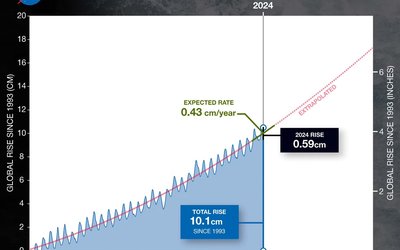Coastal erosion and coastal floods
19% of the world’s population lives on sinking land
August 24, 2021

Photo: Azevedo Elcio (www.flickr.com)
Land subsidence
The land in many parts of the world is subsiding, mainly because of groundwater depletion. During the past century, land subsidence due to groundwater depletion occurred at 200 locations in 34 countries. Land subsidence increases coastal and fluvial flood risk. Coastal flood risk is determined by relative sea-level rise: the sum of absolute sea-level rise and land subsidence.
For 8% of the global land surface there is a 50% probability that the land is threatened by land subsidence. Potential subsidence areas are concentrated in and near densely urban and irrigated areas with high water stress and high groundwater demand. These areas include 22% of the world’s major cities.
Contributor to flood risk
For 1.6% of the global land surface the probability of land subsidence is high or very high. This area includes 19% of the global population and 12% of global GDP. Part of this area is flood-prone; potential subsidence threatens 484 million inhabitants living in flood-prone areas, 75% of whom live in fluvial areas and 25% of whom live near the coast.
Land subsidence is a major contributor to flood risk. 50% of the global population exposed to flooding hazards lives in areas where the land is subsiding. Subsidence threatens 15 of the 20 major coastal cities ranked with the highest flood risk worldwide.
Future projections
During the next decades, global population and economic growth will continue to increase groundwater demand and accompanying groundwater depletion and, when exacerbated by droughts, will probably increase land subsidence occurrence and related damages or impacts.
By 2040, the part of the global population threatened by land subsidence is predicted to rise by 30%, affecting 1.6 billion inhabitants, 635 million of whom will be living in flood-prone areas.
Source: Herrera-García et al., 2021. Science 371 (6524): 34-36.








